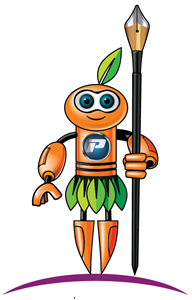31 Oct Significance of Information Architecture in Tech Comm
Significance of Information Architecture in Technical Communication
— Sumedh Nene
I have served various roles in the technical communications (TC) profession—an individual contributor, a technical editor, a technical writer and trainer, a content strategist. One of the most interesting roles has been that of an Information Architect. Through my conversations within the TC fraternity, I have come to realize that while Information Architecture (IA) is an extremely important concept for the overall content strategy, it is often either misunderstood or not fully understood by many.
Here is my attempt at simplifying this term with simple examples and analogies. My friend, Ashutosh has written an excellent article on Taxonomy (also published in this edition) and I hope these two articles will create a few Aha! moments about IA, the importance of Taxonomy in IA, and how it benefits not only technical professionals, but also the everyday user.
Imagine walking into a huge toy store filled with thousands of toys—board games, puzzles, action figures, stuffed toys, play dough—all inside identical looking boxes with no labels and no organization, making it difficult to find the kind of toy you are looking for.

Now, visualize this nightmarish scenario in the digital world, where there are trillions of bytes of data, but no way to find the information you actually need; that is because it lacks Information Architecture and Taxonomy is not being used to label, segregate, and categorize the content.
Understanding Information Architecture
At its surface, IA seems like a complex term, but at the core, it is all about organizing and structuring the content to make it accessible. Like a toy store that has sections of well-organized shelves with correct labels, IA aims to add some method to the madness of the digital world.
Without a solid IA, the massive amounts of digital data, such as text, images, videos, blogs, would seem like a tangled mess, making it impossible to find what you are looking for. Whether you are searching a specific product on Amazon, or a particular file or document in a huge database or content management system, IA plays a vital role in your search experience. Information Architecture is like building a house. Taxonomy is the blueprint that tells you where each room goes in that overall plan and how to arrange everything in it for ease of use and access.

Understanding Taxonomy
Taxonomy is the science of classification (read the article on Taxonomy included in this edition). IA uses Taxonomy to define a well-defined system of categorization to help organize and label the information. Think of Taxonomy as a Table of Contents or the index of a book, allowing you to quickly locate the information you need. It is like sorting your toys into different boxes—one box for cars, one for puzzles, and so on. It helps make things easy to find.
Imagine shopping online for a new pair of shoes. Without Taxonomy, you would be scrolling through an endless list of shoes without a way to narrow down your choices. Taxonomy helps categorize the shoes into groups, such as running shoes, formal shoes, or casual shoes. This categorization takes you to the desired area, saving you time and effort.
Just like Taxonomy, IA plays a vital role in our everyday lives. Let’s look at some common uses of IA that we come across regularly:
- Websites use IA to organize their content. Some websites are easy to navigate and you can quickly find exactly what you are looking for, while others can be quite frustrating; this experience depends on how good or bad the IA strategy is for that site.
- Mobile applications use IA to create intuitive interfaces. This helps you quickly navigate through the features—checking your email, ordering food, or using social media.
- Online stores employ IA to categorize products, making it a breeze for users to filter and search from their inventory.
- Your email clients use IA to help you manage your emails. Features like folders, labels, tags, and search functions offer easy access to your messages.
In Summary
According to an estimate, we produce approximately 2.5 quintillion bytes of data every day! Without the correct use of IA and Taxonomy, we would be drowning in this data without finding anything ever. To conclude, IA and Taxonomy are closely related concepts serving different purposes for structuring information.
IA is the broader framework for organizing and structuring information to make it accessible and understandable. It focuses on the overall design and structure of information systems. The entire system is in its scope, including the navigation, the labeling, the hierarchy, and the user experience. It defines how information is presented and how users will interact with it. For example, on a website, IA determines the main menu, such as Home, About us, Services, Contact us. It defines the grouping of the content, the page hierarchy, and how the user will navigate from one page to another.

Taxonomy on the other hand is a very specific part of IA that deals with the classification and categorization of information. It defines how the content is labeled and sorted, making it easier to find and understand. It is a subset of IA that focuses on creating a structured system of categories, tags, and labels. For example, it dictates how products on an online shopping site should be categorized, such as Electronics, Clothing, Home Decor, and so on.
About the Author
Sumedh Nene has 20+ years of international experience in Technical Communications. He has worked with Cisco Systems, HP, Philips, TIBCO, Nvidia Graphics, Deutsche Bank and Levis’ in Singapore, Australia, India, USA (Bay Area), and Canada (Toronto).
He has been teaching Technical Writing and mentoring writers for many years. He was the lead instructor at George Brown College in Toronto and Rotman School of Management, Toronto. He was also a visiting faculty for communication-related topics at SIMS, SSIBM, PIBM and Bits Pilani, Roorkee. Sumedh has conducted workshops at Avaya, Siemens, MCCIA, Eclipsys and many other IT MNCs.
Current Role: Technical Writer, Trainer, Editor, Documentation Specialist
Company: CrackerJack WordSmiths Inc.
City: Mississauga, Canada





No Comments